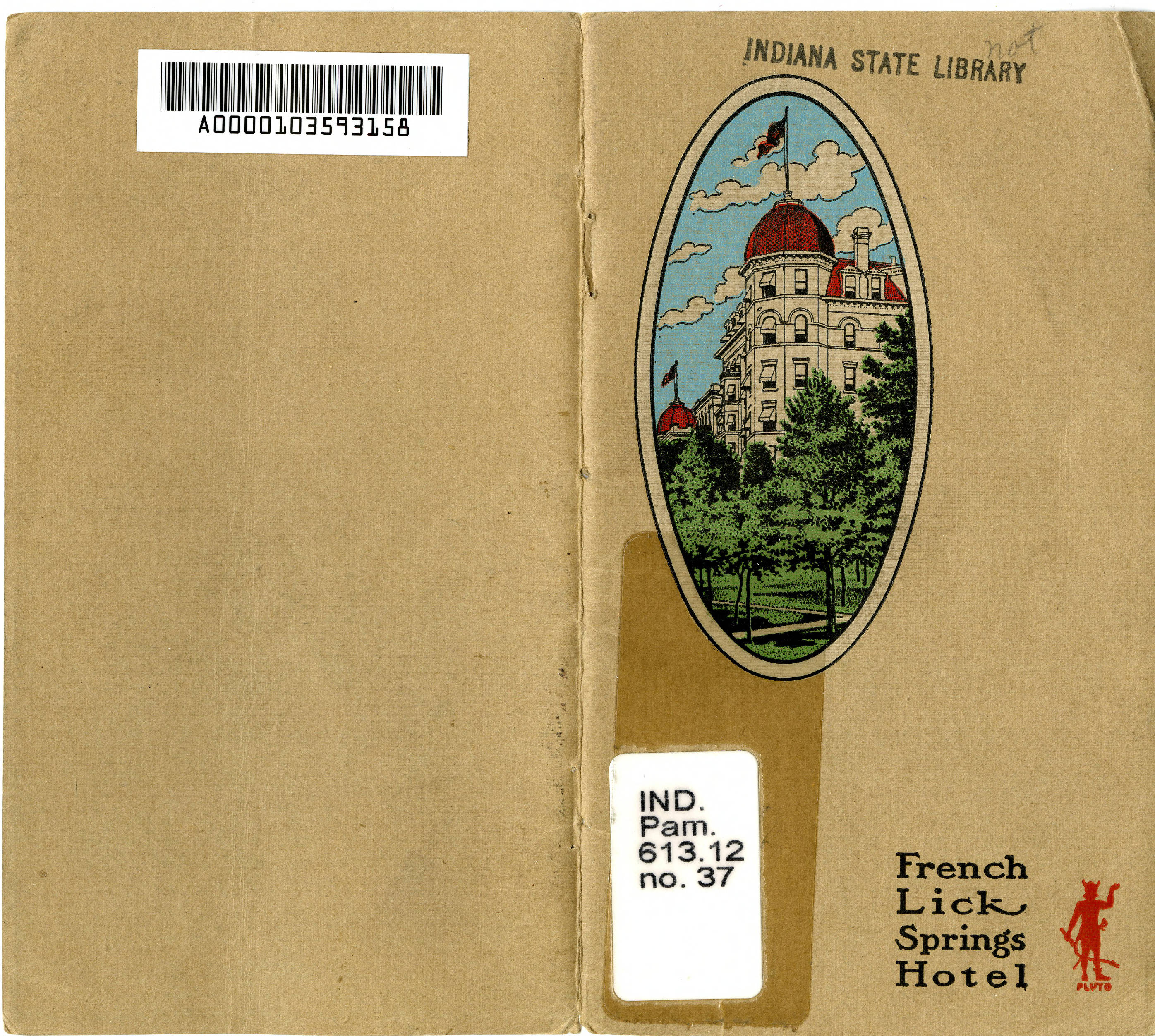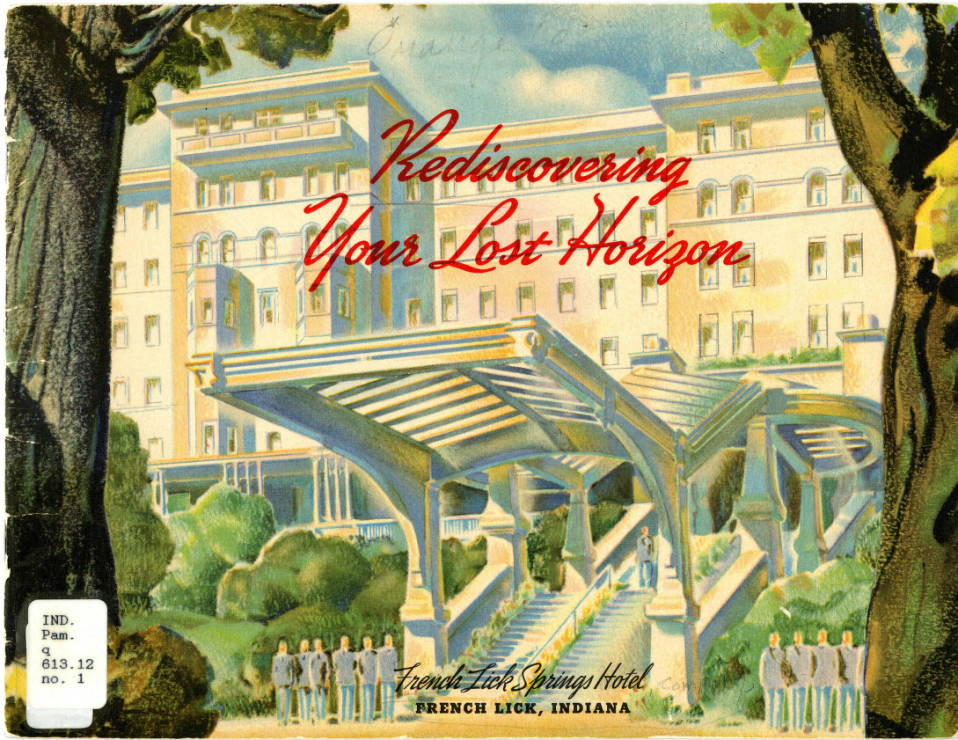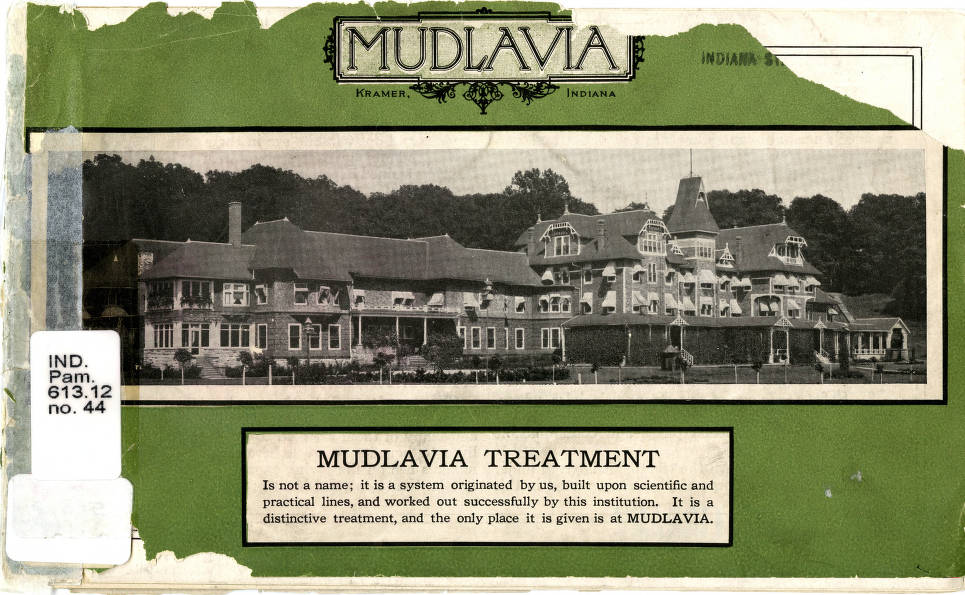Many of us have probably already broken our New Year’s resolutions. If one of your resolutions was to live healthier in 2018, you may be interested in some of the health “cures” of yesteryear.
Two of the most popular Indiana historic hotels and spas, the French Lick Springs Hotel and the West Baden Springs Hotel, heavily advertised the healing properties of “taking the waters” during the early part of the 20th century. This involved bathing in the spring water and imbibing the sulfur-smelling water several times per day. French Lick Springs bottled the water and sold it internationally as Pluto water. West Baden’s version was Sprudel water. The spring waters were thought to help health conditions like diabetes and arthritis, as well as everyday ills such as irregularity and fatigue.
If you were thinking of trying to lose weight this year, you are not alone. In fact, this resolution is nothing new.
 In his pamphlet from 1931, How to Slenderize the French Lick Way (Ip 613.12 no. 11), William Edward Fitch, MD, prescribed a plan which includes taking French Lick Salts mixed in water each day.
In his pamphlet from 1931, How to Slenderize the French Lick Way (Ip 613.12 no. 11), William Edward Fitch, MD, prescribed a plan which includes taking French Lick Salts mixed in water each day.
Two of the ingredients of French Lick spring water include sodium chloride and magnesium sulfate, both of which have laxative properties. The French Lick slenderizing program includes a low-calorie diet and some calisthenics, some of which are similar to yoga poses that are still done today. This pamphlet illuminates notions about diet and exercise popular during that time period. How to Slenderize the French Lick Way is digitized in the Indiana State Library’s Digital Collections.
The French Lick Springs Hotel, bought by Thomas Taggart in 1901, published regular advertising brochures touting the water cure. Here is an example from our digital collection:
This early 20th century brochure for the hotel featured indoor and outdoor springs so that people could take the water cure no matter the weather. The brochure includes a very detailed list of the ailments the water can help heal along with beautiful photos of the hotel and grounds. Other amenities advertised included a lush golf course and even a bowling alley. Exercise was strongly encouraged as part of the “cure.” There was even an outdoor pool that was put under a dome so that guests could swim outdoors in wintertime. The dome has been removed in recent years.
The West Baden Springs Hotel developed by Lee Sinclair was advertised as the “Carlsbad of America,” in trying to align the hotel with famous European spa resorts. In this digitized pamphlet, West Baden Springs: The Carlsbad of America (Ip 613.12 no. 52) published in the early 1900’s, Sprudel Spring Water as a health aid and an onsite medical facility are advertised.
You can still visit many of the outdoor springs at the West Baden Springs Hotel today. The grounds have been partially restored, including some of the spring houses. The main attraction to the West Baden Springs Hotel was then, and still is, the beautiful and unique indoor dome, nicknamed the Eighth Wonder of the World. This hotel is regularly named one of the most luxurious both in Indiana and in the United States.
Both hotels still have spas attached in which you can still bathe in the spring water. The spas also feature massages and skin treatments among many other amenities. Even if you abandon your New Year’s resolutions altogether, visiting French Lick and West Baden will appeal to your interests in history and architecture. The beauty and glamour of these resorts will restore your spirit even if you decide not to “take the waters.”
More information is available at the Indiana State Library about French Lick and West Baden among other Indiana health spas. See this Indiana Collection Subject Guide to Mineral Spring Spas in Indiana.
This blog post was written by Leigh Anne Johnson, Indiana Division librarian, Indiana State Library. For more information, contact the Indiana State Library at (317) 232-3670 or “Ask-A-Librarian.”







